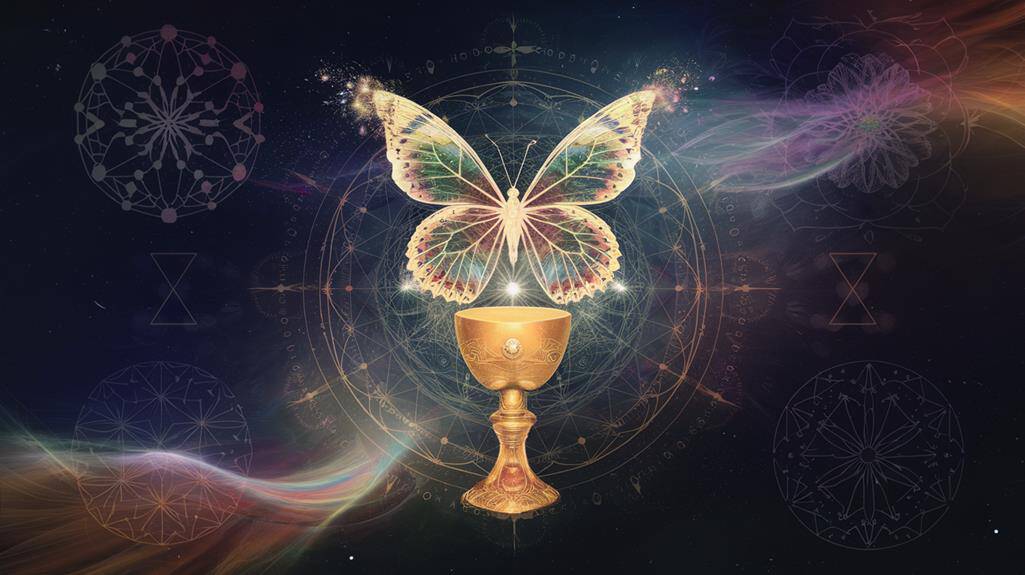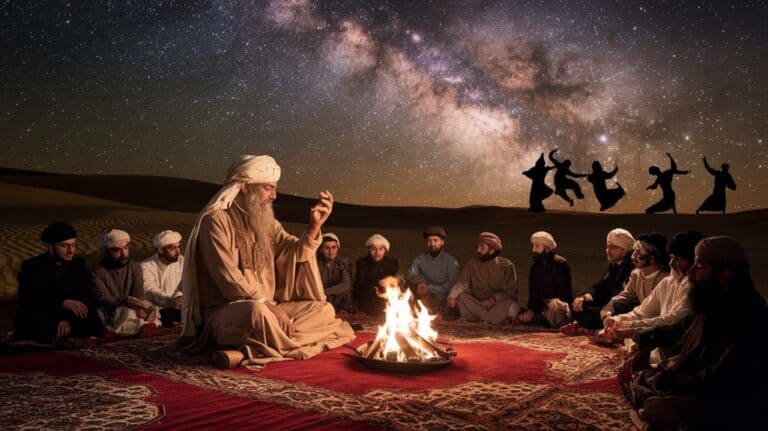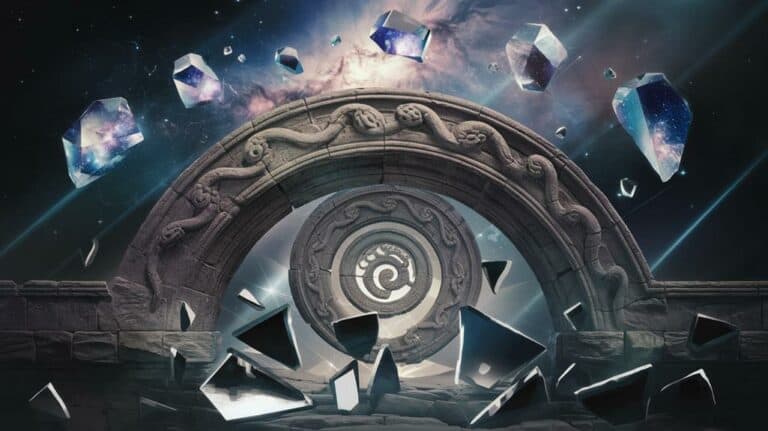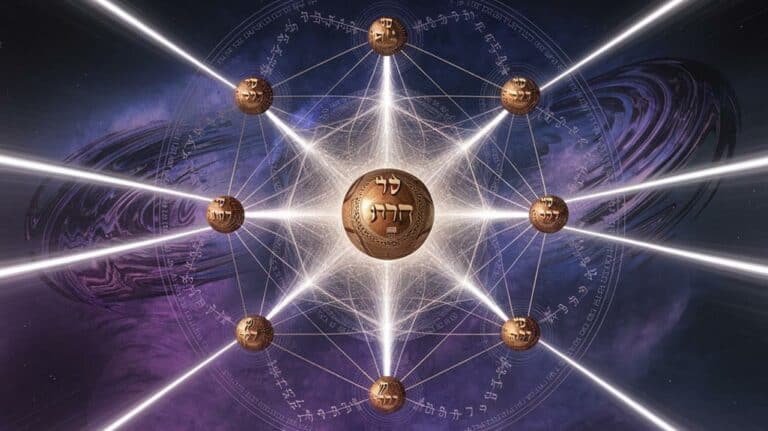The Concept of Spiritual Alchemy in Mystical Traditions
You’ve likely encountered spiritual alchemy without recognizing it in your daily life – those moments of profound personal transformation that seem to forge your basic nature into something more refined. This ancient practice, far deeper than its popular association with turning lead into gold, represents a universal blueprint for human enlightenment that’s woven through countless mystical traditions. From Egyptian mystery schools to Jung’s psychological theories, spiritual alchemy offers a fascinating roadmap for inner evolution. What you’ll discover about this transformative process might fundamentally shift your understanding of personal growth and consciousness itself.
Origins of Spiritual Alchemy
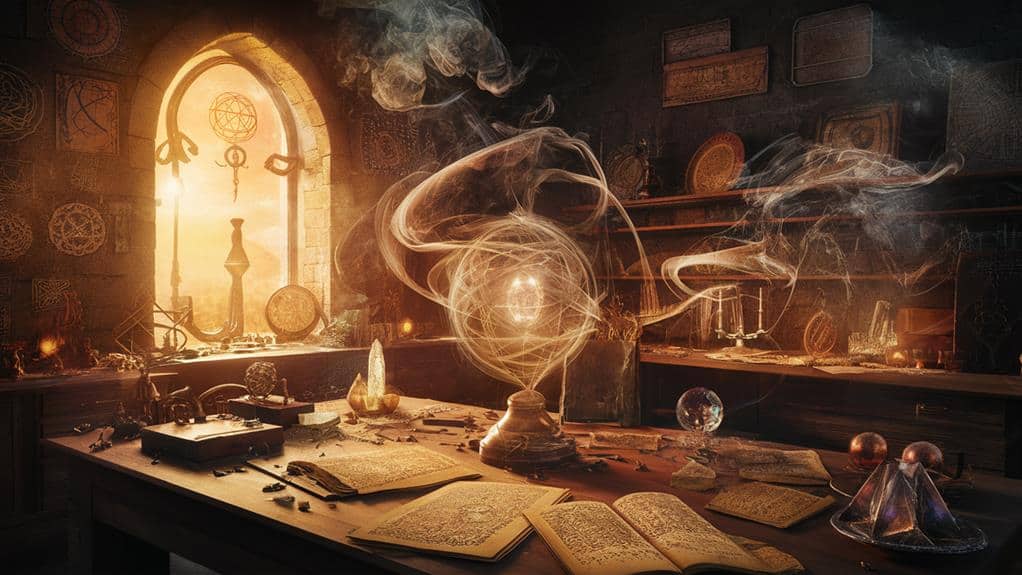
While physical alchemy sought to transform base metals into gold, spiritual alchemy emerged in ancient civilizations as a metaphorical path to inner transformation.
You’ll find its earliest traces in Egyptian mysticism, where the process of mummification paralleled the soul’s journey toward divine perfection. As you explore deeper into history, you’ll discover how these ancient wisdom traditions spread through Mediterranean trade routes, influencing Hermetic philosophy and early Gnostic teachings.
In your investigation of spiritual alchemy’s roots, you’ll encounter how Persian mystics and Greek philosophers wove together practical metallurgy with profound spiritual symbolism.
The ancient practice of purifying metals became a powerful metaphor for purifying the soul, as you’d transform your base nature into spiritual gold. This tradition wasn’t confined to Western thought – you’ll see similar patterns in Chinese Taoist alchemy and Indian Tantric practices, where the body itself became the alchemical vessel for transformation.
Through these diverse cultural expressions, you’ll recognize how spiritual alchemy has always offered a universal language for the soul’s evolution, transcending geographical and temporal boundaries.
Key Alchemical Symbols and Metaphors
Throughout the history of spiritual alchemy, practitioners developed a rich symbolic language to encode their transformative teachings.
Within this intricate system, you’ll discover that base metals represent your unrefined nature, while gold symbolizes your highest spiritual potential. The alchemical marriage of sun and moon reflects the union of your opposing inner forces – conscious and unconscious, masculine and feminine, light and shadow.
You’ll encounter the phoenix rising from ashes, revealing how destruction precedes renewal in your spiritual journey. The ouroboros – the serpent devouring its tail – illustrates the cyclical nature of transformation and the eternal return to your authentic self.
Through the metaphor of the philosopher’s stone, you’re invited to contemplate the ultimate catalyst for inner transmutation.
As you explore deeper, you’ll recognize how the stages of alchemical work – nigredo (blackening), albedo (whitening), and rubedo (reddening) – mirror your own path of dissolution, purification, and integration.
These symbols aren’t mere historical artifacts; they’re living keys that reveal the chambers of your spiritual evolution, offering timeless wisdom for your journey of self-realization.
The Seven Stages
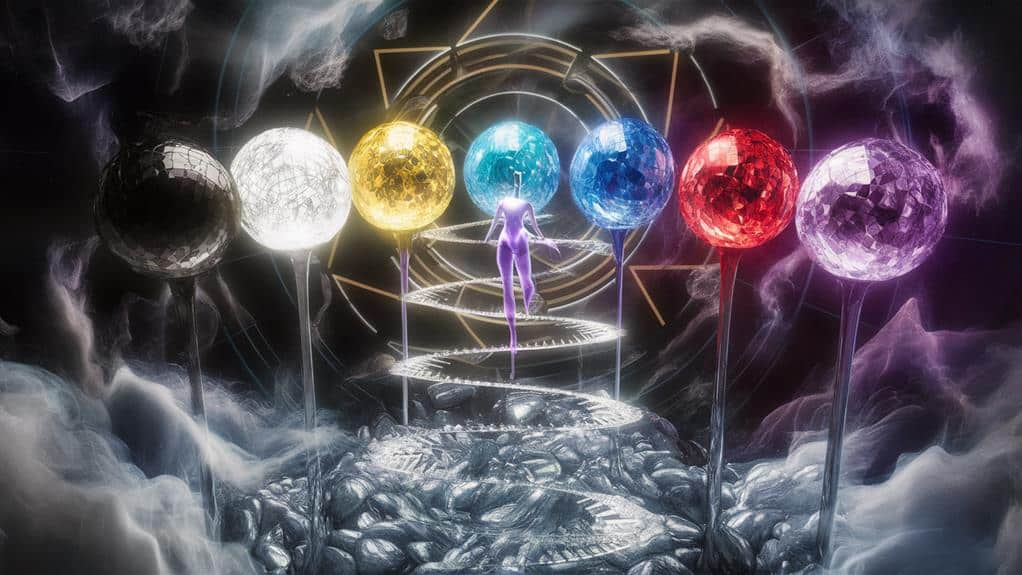
These alchemical symbols find their fullest expression in the seven distinct stages of spiritual transformation.
You’ll discover how each phase mirrors your inner journey, beginning with the blackening phase of calcination, where you’ll confront and burn away your ego’s attachments.
In dissolution, you’ll dissolve rigid thought patterns in the waters of emotion, allowing your true nature to emerge.
Through separation, you’ll learn to distinguish truth from illusion, carefully sorting through the elements of your psyche.
As you enter conjunction, you’ll unite opposing forces within yourself, bringing together the masculine and feminine, light and shadow.
In fermentation, you’ll experience a spiritual death and rebirth, while distillation purifies your essence, removing remaining impurities from your consciousness.
Finally, you’ll reach coagulation, where your transformed self crystallizes into a new, stable form.
Each stage demands your full presence and courage as you transmute your base nature into spiritual gold.
You’re not just observing these changes – you’re living them, breathing them, becoming them in a profound dance of transformation.
Western Esoteric Traditions
Exploring Western esoteric traditions reveals a rich tapestry of mystical practices that have shaped spiritual alchemy across Europe. You’ll find these teachings woven through the works of Hermetic philosophers, Rosicrucians, and Kabbalistic masters who’ve preserved ancient wisdom through generations of initiates.
Within these traditions, you’re invited to discover how the transformation of consciousness mirrors the alchemist’s quest to transmute base metals into gold.
You’ll encounter profound systems that integrate astrology, sacred geometry, and numerology into their spiritual framework. The Hermetic axiom “as above, so below” becomes your guide through layers of symbolic understanding, where each ritual and meditation serves as a key to access deeper aspects of your being.
These traditions teach you to recognize the divine spark within yourself, encouraging a journey through various stages of spiritual refinement.
When you explore Western esoteric practices, you’ll find they’re not merely historical curiosities but living traditions that continue to offer relevant pathways for inner transformation.
Through careful study and practice, you’ll learn to navigate the subtle dimensions between matter and spirit, discovering how ancient wisdom can illuminate your modern spiritual journey.
Eastern Mystical Parallels
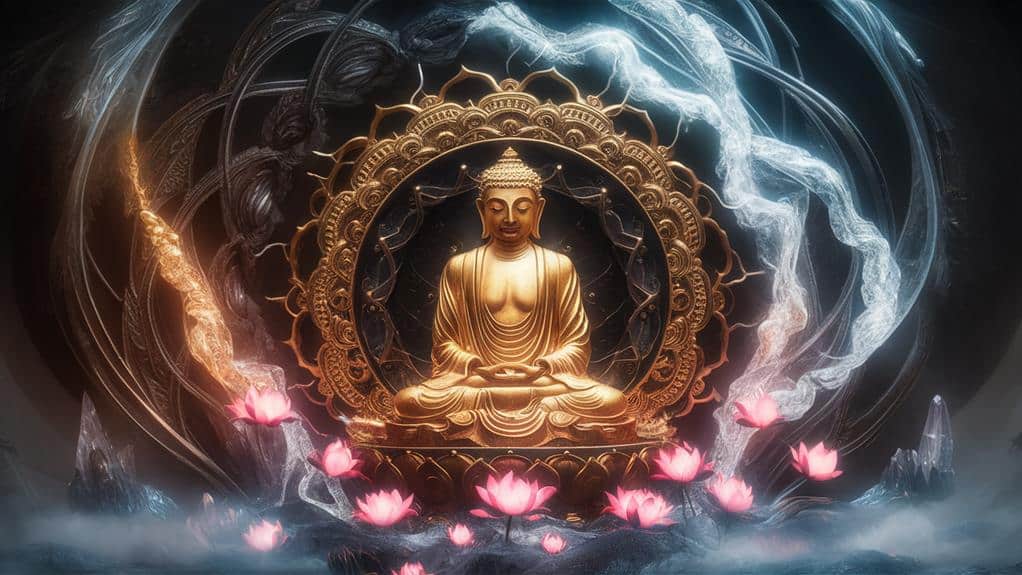
While Western esoteric practices offer one path to spiritual transformation, parallel teachings in Eastern mystical traditions reveal remarkably similar alchemical principles.
You’ll find this mirrored in the Taoist concept of neidan, or internal alchemy, where practitioners work to transmute their base nature into spiritual gold through meditation, breathing practices, and energy cultivation.
Similarly, in Tantric Buddhism, you’re guided to transform ordinary consciousness into enlightened awareness through sophisticated visualization techniques and subtle energy practices.
These Eastern paths teach you that the raw materials for spiritual transformation aren’t found in physical laboratories but within your own consciousness.
You’ll discover how the Sanskrit tradition speaks of transforming the “lead” of ego-attachment into the “gold” of enlightened awareness through practices like kundalini yoga.
In Vedantic teachings, you’re shown how to purify your consciousness through tapas (spiritual heat) and dharana (focused concentration), much like the Western alchemist‘s use of fire and focused intention.
The core message remains consistent across these traditions: you’re both the alchemist and the materia prima, the transformer and that which must be transformed.
Jung’s Psychological Interpretation
Carl Jung revolutionized our understanding of spiritual alchemy by interpreting it as a symbolic map of psychological transformation. You’ll find that he viewed the alchemist’s quest to turn lead into gold as a metaphor for the journey toward psychological wholeness – what he called individuation.
Through this lens, you’re able to see how the stages of alchemical transformation mirror your own inner development, from confronting your shadow self to integrating your conscious and unconscious aspects.
When you explore Jung’s interpretation, you’ll discover that the alchemical operations – calcination, dissolution, separation, conjunction – represent psychological processes you’ll encounter on your path to self-realization.
The prima materia becomes your raw psychological state, while the philosopher’s stone represents your fully integrated self.
You’re not just studying ancient symbolism; you’re engaging with a profound framework for understanding your own psyche’s evolution.
Jung’s work reveals how the alchemists’ cryptic texts weren’t merely about physical transmutation – they were encoding timeless wisdom about the transformation of consciousness that you can apply to your own journey of self-discovery.
Sacred Text References
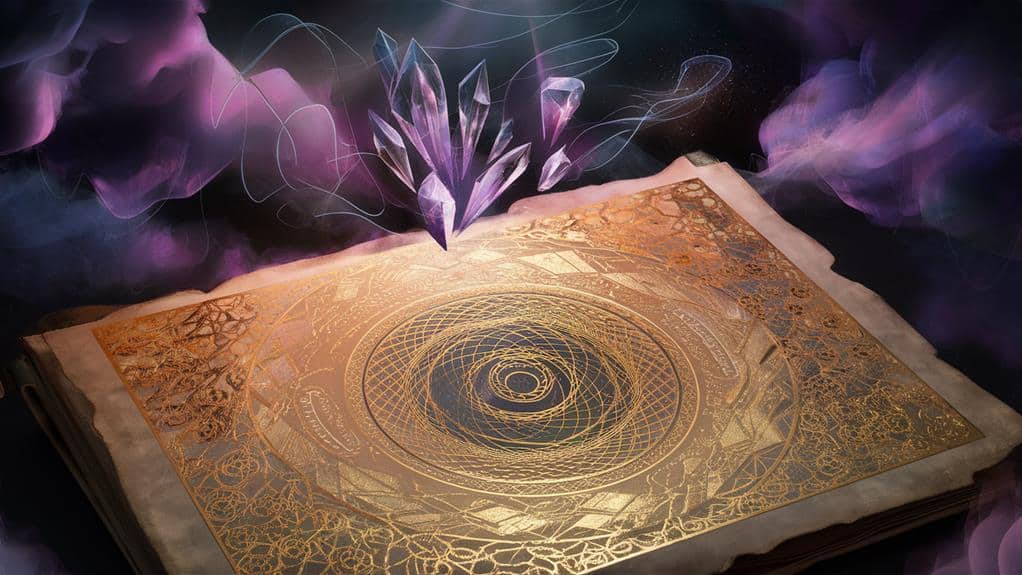
Ancient sacred texts explore spiritual alchemy across numerous traditions, offering profound insights into transformative practices.
You’ll find detailed metaphors of inner transformation in the Corpus Hermeticum, where Egyptian and Greek wisdom traditions merge to reveal the paths of spiritual refinement. The Emerald Tablet‘s famous axiom “as above, so below” continues to shape your understanding of the relationship between inner and outer dimensions.
In Eastern traditions, you’ll discover the Taoist texts speaking of the “golden elixir” (neidan), where your essential essence transforms through meditation and breathing practices.
The Upanishads reveal the process of transmuting consciousness through the understanding of Brahman, while Tibetan Buddhist tantras describe the transformation of ordinary perception into divine wisdom.
When you explore Islamic traditions, you’ll encounter the works of Sufi masters like Rumi and Ibn Arabi, who’ve woven alchemical metaphors throughout their teachings on spiritual evolution.
These sacred writings don’t just describe transformation – they become catalysts for your own inner alchemy, offering timeless guidance for the soul’s journey toward its highest potential.
Modern Applications
Modern practitioners have reimagined spiritual alchemy through contemporary psychological and therapeutic frameworks. You’ll find these ancient principles woven into mindfulness practices, shadow work, and transformative healing modalities that speak to today’s seekers.
Within these approaches, you’re invited to transmute emotional lead into psychological gold, just as the alchemists of old sought to transform base metals.
Today’s spiritual alchemy manifests in your journey of self-discovery, where you’ll encounter practices like conscious breathing, energy work, and meditative states that mirror the classical stages of alchemical transformation.
You’re encouraged to dissolve old patterns, purify limiting beliefs, and crystallize new ways of being. Through these contemporary interpretations, you’ll discover how the alchemical processes of calcination, dissolution, and coagulation translate into powerful tools for personal evolution.
You’ll find these principles at work in holistic healing centers, transformational workshops, and even corporate leadership programs that draw upon the wisdom of spiritual alchemy.
The ancient art hasn’t disappeared—it’s simply evolved, offering you a bridge between timeless wisdom and modern understanding, where inner transformation remains the ultimate goal.
Transformative Practices Today
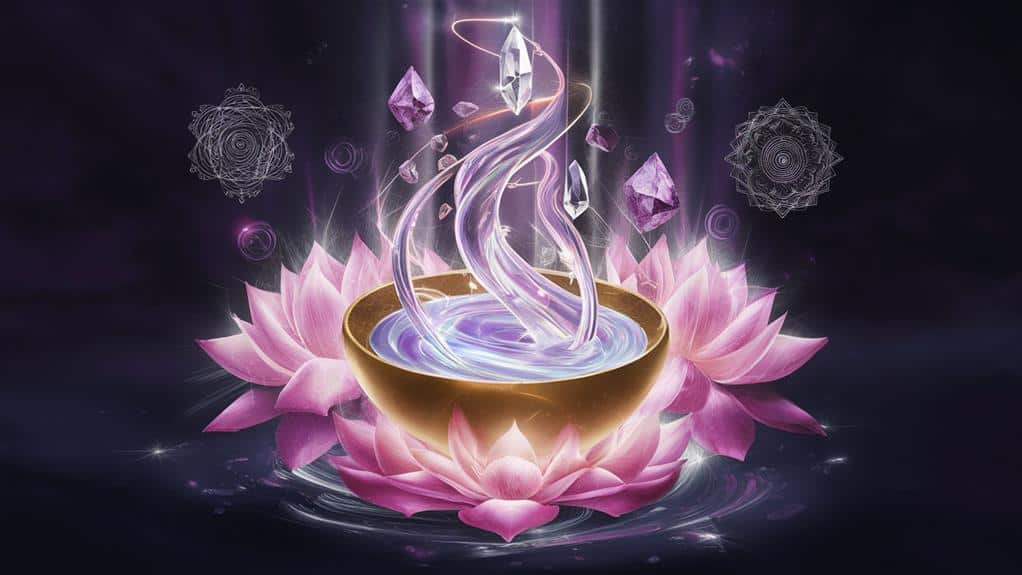
Specific practices have emerged that blend traditional alchemical wisdom with contemporary approaches to transformation. You’ll find these practices woven into mindfulness meditation, breathwork, and somatic experiencing – each offering a unique pathway to inner transmutation.
Through these methods, you’re invited to witness your consciousness shift from base mental states into refined awareness, much like the alchemists’ vision of turning lead into gold.
In your daily practice, you’ll discover how ancient principles of solve et coagula (dissolution and coagulation) manifest through modern therapeutic techniques. You might engage in shadow work, confronting and integrating denied aspects of yourself, or explore embodiment practices that transform emotional energy into spiritual insight.
As you work with these methods, you’ll notice how they mirror the traditional stages of alchemical transformation – nigredo (blackening), albedo (whitening), and rubedo (reddening) – but in psychological terms.
These contemporary adaptations don’t require arcane laboratories or mystical furnaces. Instead, you’ll find transformation through consistent inner work, where your body becomes the athanor (alchemical furnace) and your awareness serves as the philosopher’s stone.



